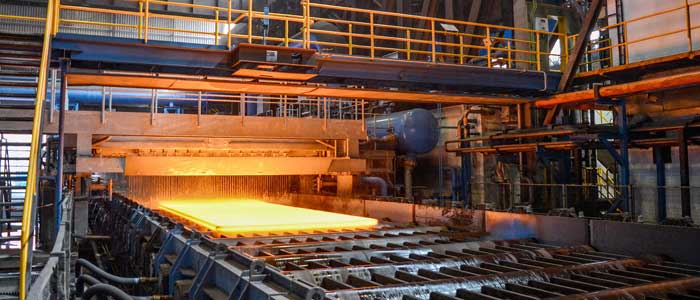Hastelloy is a high-performance alloy known for its exceptional corrosion resistance and strength. It is widely used in various industries due to its unique properties that withstand harsh environments. In this article, we will delve into what Hastelloy is, its composition, properties, and the various applications where it excels.
Hastelloy is a trademarked name for a family of nickel-based alloys. These alloys are known for their ability to withstand extreme temperatures and corrosive environments. The primary component of Hastelloy is nickel, but it also includes other elements such as molybdenum, chromium, iron, and tungsten, which enhance its properties.
Hastelloy Composition
The composition of Hastelloy varies depending on the specific grade. However, all Hastelloy grades share a common base of nickel. Here is a general breakdown of the key components:
- Nickel (Ni): The primary element, providing excellent corrosion resistance.
- Molybdenum (Mo): Enhances resistance to pitting and crevice corrosion.
- Chromium (Cr): Adds to oxidation resistance and overall strength.
- Iron (Fe), Tungsten (W), and Cobalt (Co): May be present in varying amounts to improve specific properties.
Each grade of Hastelloy is engineered for particular applications, which dictate its exact composition.
Hastelloy Metal Characteristics
The characteristics of Hastelloy make it a sought-after material in industries that require durability and resistance to extreme conditions. Here are some of its notable properties:
Corrosion Resistance
Hastelloy is renowned for its exceptional resistance to corrosion. It can withstand a wide range of corrosive substances, including acids, chlorides, and other aggressive chemicals. This makes it ideal for applications in chemical processing, where corrosion can be a significant issue.
High-Temperature Stability
Hastelloy maintains its strength and integrity at high temperatures. This property is crucial for industries such as aerospace and power generation, where materials are exposed to extreme heat.
Mechanical Strength
Despite its resistance to corrosion and heat, Hastelloy also offers excellent mechanical strength. This balance of properties makes it a versatile material for many demanding applications.
Applications of Hastelloy
Hastelloy’s unique properties make it suitable for a wide range of applications across various industries. Below are some of the most common uses:
Chemical Processing
In the chemical industry, Hastelloy is used to manufacture reactors, heat exchangers, and other equipment that must withstand corrosive chemicals. Its resistance to acids and high temperatures makes it an ideal choice for these applications.
Aerospace
The aerospace industry relies on Hastelloy for components such as turbine engines and exhaust systems. Its ability to maintain strength at high temperatures is essential for these high-performance applications.
Power Generation
Hastelloy is used in power plants for components that are exposed to high temperatures and corrosive environments. Its stability and corrosion resistance are crucial for the longevity and efficiency of power generation equipment.
Oil and Gas
In the oil and gas industry, Hastelloy is employed in drilling equipment and pipelines. The harsh environments encountered in this industry, such as saltwater and acidic gases, require materials that can withstand these conditions without degrading.
Hastelloy Grades
There are several grades of Hastelloy, each designed for specific applications. Some of the most common grades include:
Hastelloy C-276
This grade is one of the most versatile and widely used. It offers excellent resistance to a broad range of severe environments and is used in chemical processing and pollution control equipment.
Hastelloy X
Hastelloy X is known for its high-temperature strength and oxidation resistance. It is commonly used in gas turbine engines and industrial furnace applications.
Hastelloy B-2
Hastelloy B-2 is particularly resistant to hydrochloric acid. It is used in environments where reducing conditions are prevalent, such as chemical processing.
Hastelloy Properties and Composition
The unique properties of Hastelloy arise from its complex composition. By carefully selecting and combining various elements, different grades of Hastelloy can be tailored to meet specific performance criteria.
Corrosion-Resistant Alloy
The combination of nickel, molybdenum, and chromium provides exceptional resistance to corrosion. This makes Hastelloy suitable for environments where other materials would fail.
Nickel-Based Alloys
As a nickel-based alloy, Hastelloy inherits the inherent properties of nickel, including its ability to form a protective oxide layer that prevents further corrosion.
Conclusion
Hastelloy is a remarkable material that combines strength, corrosion resistance, and high-temperature stability. Its unique properties make it indispensable in industries that operate under extreme conditions. By understanding the composition and characteristics of Hastelloy, engineers and designers can select the appropriate grade for their specific application needs. Whether in chemical processing, aerospace, power generation, or oil and gas, Hastelloy continues to play a critical role in advancing technology and ensuring the longevity of equipment.
In summary, if you are looking for a material that can withstand the harshest environments and provide reliable performance, Hastelloy is an excellent choice. With its various grades and tailored compositions, it offers solutions for a wide range of industrial challenges.










